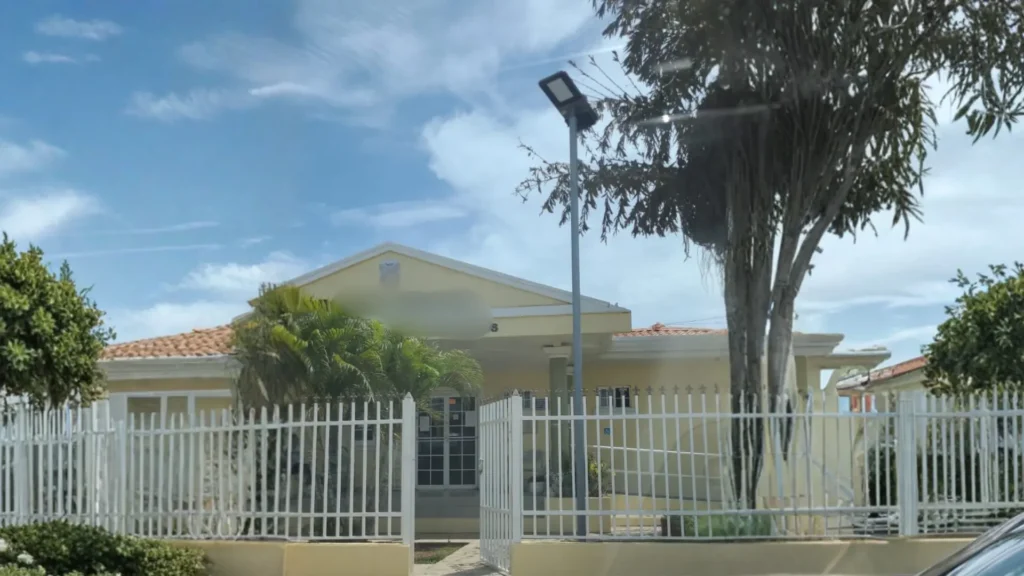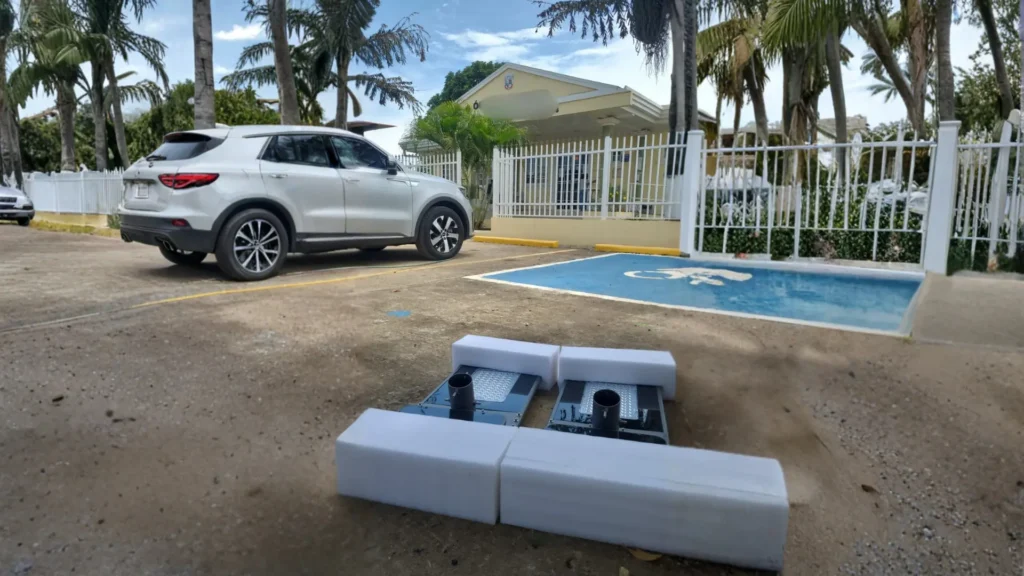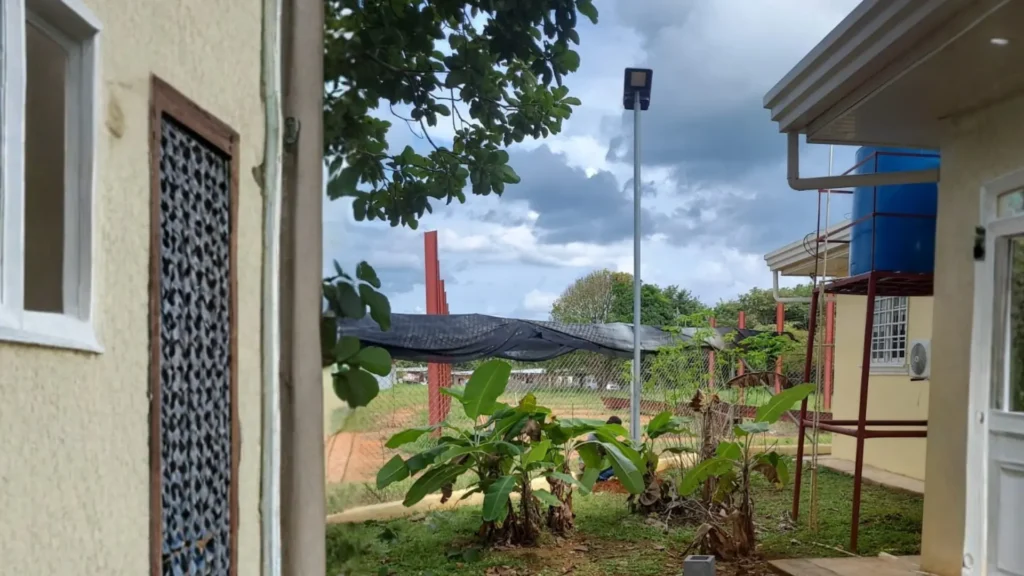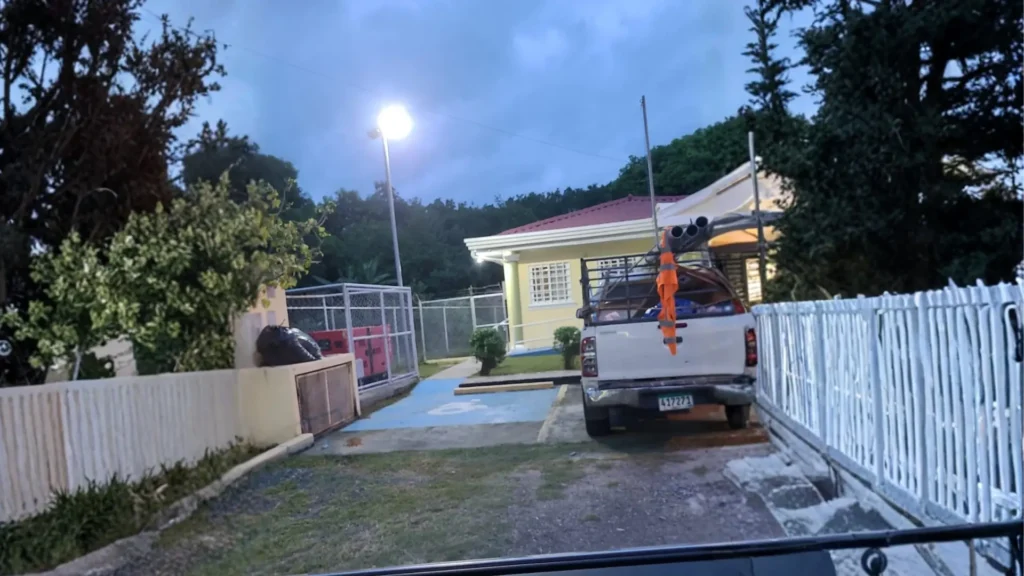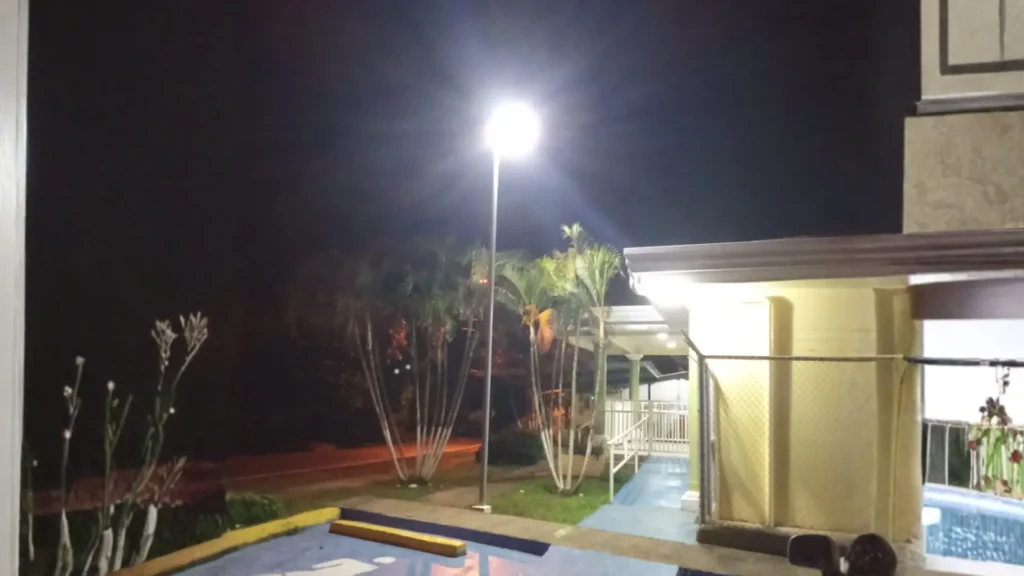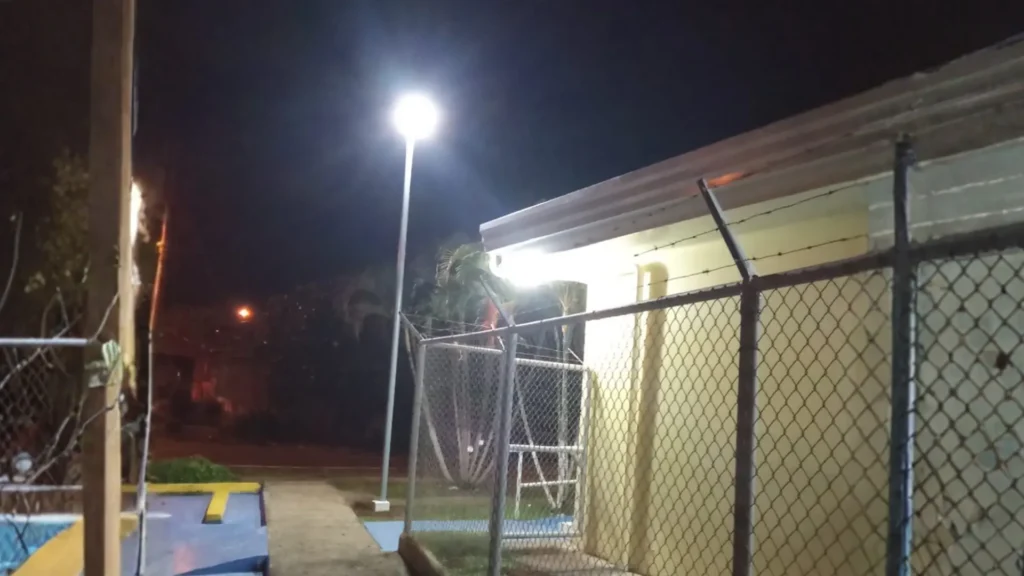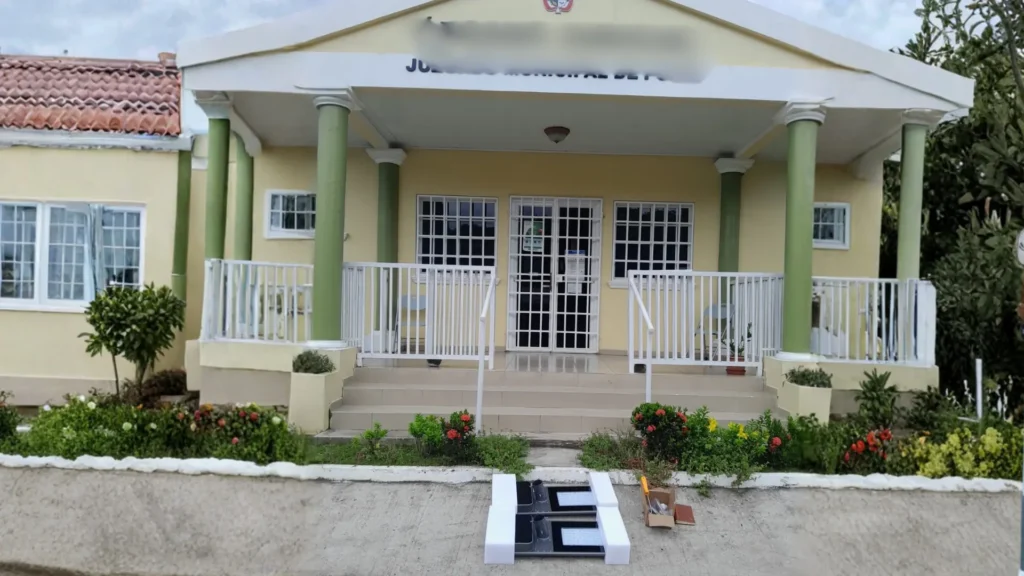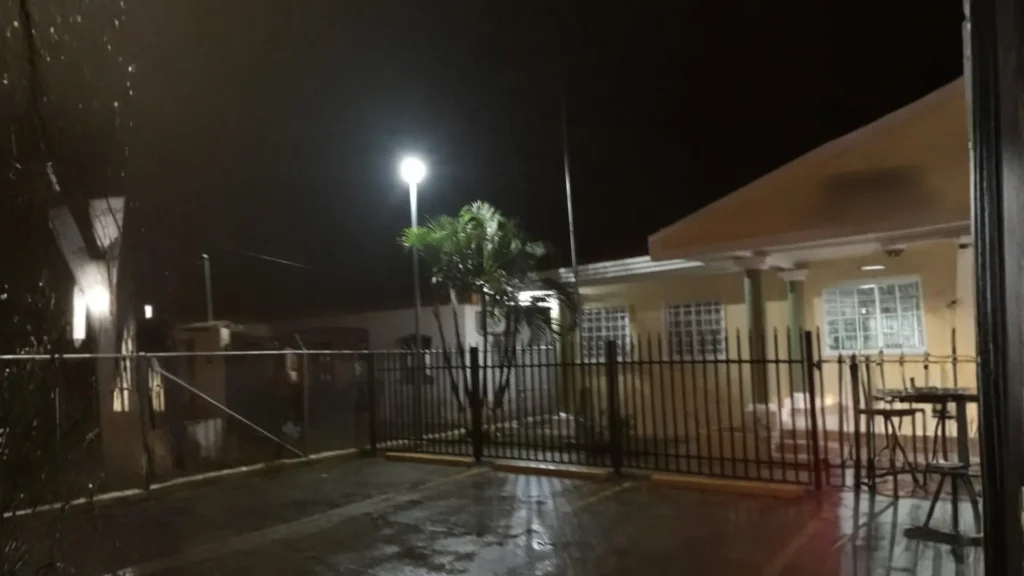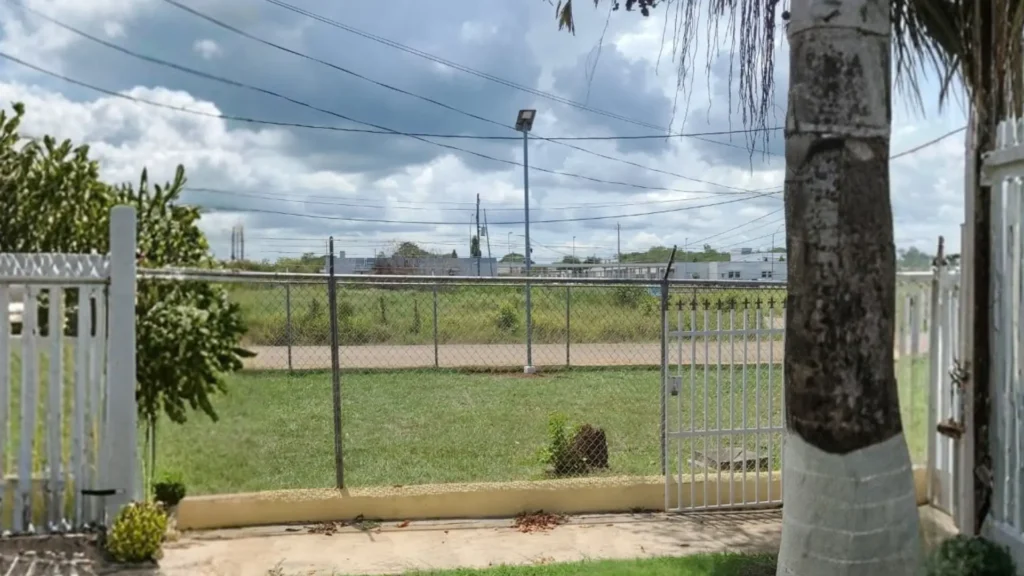I. Project Background and Needs Analysis
Amid the global wave of sustainable urbanization and energy transition, Latin American nations such as Panama face both opportunities and challenges. As a Central American transportation hub, Panama benefits from a tropical climate and abundant renewable resources. However, an unstable power grid and frequent extreme weather events have become bottlenecks for community development.
This project aims to deliver a stable, efficient, and fully independent lighting solution for a Panama community—a mixed-use area that includes high-end villas and key judicial facilities. The area faces multiple issues: an unreliable grid, harsh tropical conditions (extreme heat and heavy rainfall), and rising nighttime security demands. By deploying the Sresky BASALT Series integrated solar streetlights, the project leveraged cutting-edge TCS thermal control and ALS adaptive lighting technologies. These solutions effectively overcame environmental constraints and delivered unprecedented safety and illumination throughout the community.
Core Challenges and Requirements
Energy Independence and Reliability:
Panama’s power system depends heavily on hydroelectricity (about 60%), yet droughts and an aging grid lead to frequent outages. According to IEA reports, remote communities like Pocrí have electricity coverage below 90%. The project required an off-grid lighting solution capable of ensuring stable, round-the-clock illumination, independent of the unreliable local grid.
Extreme Climate Resilience:
High temperatures exceeding 35°C, combined with humidity and long rainy seasons, often cause overheating, corrosion, and reduced charging efficiency. Lighting equipment must withstand temperatures from -20°C to 60°C and maintain illumination for up to 10 consecutive days under low-light conditions—critical in a region frequently affected by storms and flood-damaged infrastructure.
Comprehensive Community Safety (Public & Private):
Residential areas demand uniform illumination (≥30 lux) to deter theft, while judicial facilities require seamless lighting coverage to maintain order and operational security. Natural white light at 4000K with CRI >70 helps improve visibility and enhance deterrence. The project aimed to reduce crime rates by over 15% and encourage greater nighttime activity among residents.
Sustainable and Low-Cost Operations:
Aligned with Panama’s “Boldly Sustainable” initiative and national 70% renewable energy target, the solution needed to achieve zero emissions and zero energy costs. Clients prioritized low maintenance (fewer than two service visits per year) and a fast ROI cycle (3–5 years), supporting green community developments such as the 8th Life Panama Eco-Village and Veritas Village.
These requirements reflect the rising global demand for “sustainable solar solutions for Panama communities.” The Sresky BASALT Series, with its tropical-optimized design, emerged as the ideal choice.
II. Technical Solution Design
After evaluating multiple suppliers, the project team selected the Sresky BASALT Series, offering brightness levels from 4000LM to 12000LM and supporting installation heights from 4 to 12 meters—ideal for varied community layouts. Product specifications highlight an integrated design combining high-efficiency monocrystalline solar panels (>23%), lithium batteries, and OSRAM LEDs, all proven reliable in tropical environments worldwide.
Core Technology Highlights and Adaptability Analysis
1. “Off-Grid Energy Solution” for Power Instability
The BASALT “All-in-One” system integrates solar panels, long-life batteries, and smart controllers, eliminating reliance on the grid. Its customizable hybrid power mode automatically switches to AC charging when battery levels drop below 30%, addressing grid outages such as Panama’s major 2025 blackout.
2. Conquering Tropical Heat with TCS Temperature Control Technology
TCS monitors battery temperature in real time and activates intelligent heat dissipation during extreme heat. This ensures stable operation from -20°C to +60°C. Compared with traditional batteries, TCS extends cycle life by over 50% (reaching up to 2000 cycles), protecting equipment from Panama’s hot, humid climate.
3. ALS Endurance Technology for Rainy Season Lighting
The patented ALS 2.4 system adjusts power output dynamically, reducing brightness to 30% in low-light conditions (PIR mode) and boosting to 100% when motion is detected. Testing shows endurance exceeding 10 days—critical for Panama’s weeks-long rainy seasons.
4. Weather-Resistant “High Protection Rating”
The aluminum alloy frame ensures uniform stress distribution, withstanding hurricane-level impacts (IK08) and IP65 water/dust exposure. Aluminum and tempered glass structures enhance resilience during tropical storms. FAS automatic alarms identify component failures early, reducing maintenance needs.
5. Superior Luminous Efficiency & Smart Management
Wide-angle PIR sensors (120°, >8m) support intelligent modes such as:
-
M1: 30% PIR until dawn
-
M2: 100% for 5h → 25% PIR for 5h → 70% until dawn
-
M3: 70% until dawn
Optional APP/PC remote management enables monitoring solar panels, batteries, and light operation—supporting ODM customization.
These capabilities make the Sresky BASALT Series ideal for small-batch and large-scale applications in tropical regions.
III. Project Implementation and Deployment
Launched during Panama’s 2025 dry season, the team installed approximately 10 streetlights in and around the villa district based on site surveys. The integrated design enabled rapid deployment: foundation cages (C20 concrete) were prepared, brackets were secured, and installation required no wiring. Construction time was reduced by 40%, with minimal environmental disruption to the community.
IV. Project Outcomes and Impact
Following implementation, the community recorded a 20% reduction in nighttime crime and a 35% increase in resident satisfaction.
Social Value
-
Enhanced public safety: Continuous lighting deterred theft and strengthened the presence of judicial authorities.
-
Uninterrupted judicial operations: Stable illumination supported nighttime public services.
-
Increased community cohesion: Improved nighttime usability and aesthetics boosted resident interaction and property value.
Economic and Environmental Benefits
-
Zero electricity costs: Achieved full energy self-sufficiency, saving approximately 80,000 Balboas annually.
-
Green development: Zero carbon emissions supported Panama’s carbon-negative strategies and reforestation initiatives.
-
Reduced maintenance: Smart systems cut repair frequency by 50%, lowering operational expenses.
V. Risks and Mitigation Strategies
Risk: Prolonged high temperatures may shorten battery lifespan
Mitigation: TCS thermal management stabilizes battery temperature to ensure longevity.
Risk: Power shortages during extended rainy seasons
Mitigation: ALS provides over 10 days of backup lighting to withstand extreme weather cycles.
Risk: Grid fluctuations impacting operational stability
Mitigation: Off-grid design + hybrid mode ensure consistent, independent operation.
Conclusion
The Panama Community Solar Streetlight Project is more than a lighting upgrade—it is a comprehensive solution for community energy, safety, and environmental challenges. By utilizing tropical climate–optimized technologies, the Sresky BASALT Series solar streetlights have transformed a community facing power instability and security issues into a bright, safe, and sustainable modern environment.
Table of Contents
